Bukchon Hanok Village
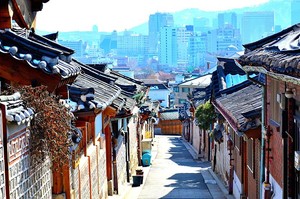
Bukchon Hanok Village is a Korean traditional village with a long history located between Gyeongbok Palace, Changdeok Palace and Jongmyo Royal Shrine. The traditional village is composed of lots of alleys, hanok and is preserved to show a 600-year-old urban environment. Now it is used as a traditional culture center and hanok restaurant, allowing visitors to experience the atmosphere of the Joseon Dynasty.
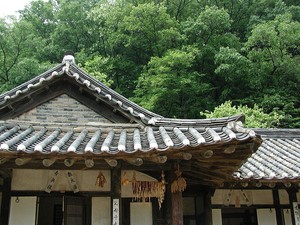
The area of Bukchon, which consists of neighborhoods: Wonseo-dong, Jae-dong, Gye-dong, Gahoe-dong and Insa-dong, was traditionally the residential quarter of high-ranking government officials and nobility during the Joseon Dynasty. It is located north of Cheonggye Stream and Jongno, hence named Bukchon, which means north village. A poll of nearly 2,000 foreign visitors, conducted by the Seoul Metropolitan Government in November 2011, stated that exploring the narrow streets of Bukchon was their fourth favorite activity in Seoul.
Namsangol Hanok Village
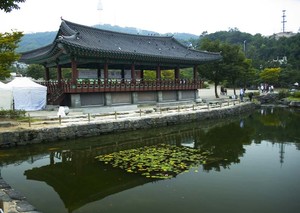
Namsangol Hanok Village, also known as "A Village of Traditional Houses in the Namsan Valley", is a Korean village located in the area of Pil-dong neighborhood in Jung-gu, a central district of Seoul, South Korea where hanok (한옥) or Korean traditional houses have been restored to preserve the original atmosphere of the area. The Namsangol Hanok Village offers one the opportunity to experience a wide cross-section of Joseon-era citizenry and activities, from royalty to commoners.
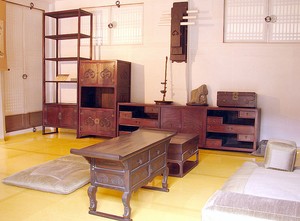
The location of the village was originally the site of a well known Joseon-era summer resort called Jeonghakdong. Jeonghakdong means "The land of the fairies for the blue crane where the Jeonugak Pavillion stands along the stream in the valley". The area boasted such superb scenery that it was called the land of the fairies and was considered one of the five most beautiful parts of Seoul.
A traditional Korean style garden, complete with a flowing stream and pavilion was constructed on the site in order to revive the classical feel of the Joseon-era. Five traditional houses, including some of the residences of high government officials - some of the largest mansions in Seoul at the time, along with commoners houses were moved to the 7,934 sq Meters/9,489 sq Yards grounds containing the restored village. In 2011 in a survey conducted, by Seoul Development Institute, which included 800 residents and 103 urban planners and architects. It listed 52.4 percent of experts, voted that the palace as the most scenic location in Seoul, following Mount Namsan, Han River and Gyeongbokgung Palace in the top spots.
Hahoe Folk Village
The Hahoe Folk Village (Korean: 안동하회마을) is a traditional village from the Joseon Dynasty. The village is a valuable part of Korean culture because it preserves Joseon period-style architecture, folk traditions, valuable books, and old tradition of clan-based villages.
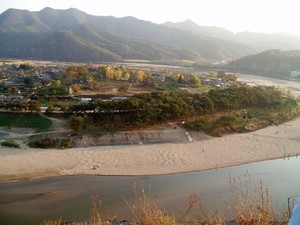
The village is located in Andong, Gyeongsangbuk-do. To the north of the village is Buyongdae Cliff while Mt. Namsan lies to the south. The village is organized around the geomantic guidelines of pungsu and so the village has the shape of a lotus flower or two interlocking comma shapes.
The village is listed by the South Korean government with UNESCO as a World Heritage site with Yangdong Folk Village in 2010.
The village maintains old architectural styles that have been lost because of rapid modernization and development in South Korea. Aristocratic tile-roofed residences and thatched-roof servants' homes preserve the architectural styles of the Joseon Dynasty. Wonjijeongsa Pavilion and Byeongsan Confucian School are two notable structures in the village. The village has preserved the shamanist rite of Byeolsin-gut and preserved Hahoe masks used in the Hahoe Mask Dance. Another rite still practiced is the Jeulbul Nori which uses strings of fireworks fired at the base of the Buyongdae Cliff.
Yangdong Folk Village
Yangdong Folk Village (Yangdong Village of Gyeongju) is a traditional village from the Joseon Dynasty. The village is located in Gangdong-myeon, sixteen kilometers northeast of Gyeongju, Gyeongsangbuk-do, South Korea, along the Hyeongsan River. Mt. Seolchang stands to the north of the village. The village is designated as Important Folklore Materials No. 189 by the South Korean government.
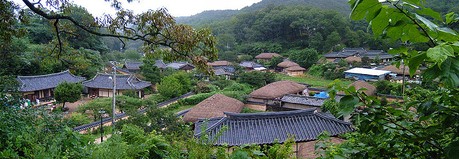
The size, degree of preservation, numerous cultural assets, traditionalism, beautiful natural setting all contribute to the importance of Yangdong Village. It is also a fine example of the yangban (Korean aristocracy) lifestyle and Neo-Confucian traditions.
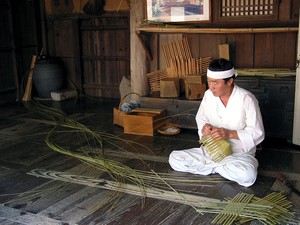
The village is listed by the South Korean government with UNESCO as a World Heritage site with Hahoe Folk Village in 2010.
Korean Folk Village
Minsok village is a living museum type of tourist attraction in the city of Yongin, a satellite city in the Seoul Metropolitan Area in the province of Gyeonggi in South Korea. Korean Folk Village is a popular tourist destination for both Koreans and foreigners. It is located near Everland, South Korea's largest amusement park.
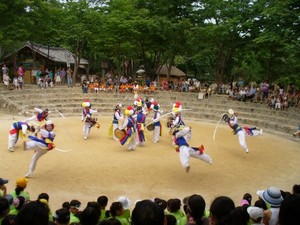
The purpose of Korean Folk Village is to display elements of traditional Korean life and culture. There are multiple sections to the park. There are numerous replicas of traditional houses of the different social classes (peasant, landowner, yangban) from various regions.

The park also has a traditional street market, restaurants, and showcases of traditional wordworking and metalworking techniques. There are performances of traditional dances, equestrian skills, marriage ceremonies, and recreational activities.
An amusement park section has rides and games, an art museum, a sculpture garden, a Korean Folk Museum, and a World Folk Museum which highlights traditional lifestyles from around the world.

Log in to write a comment